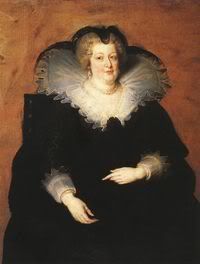L’Artisan Parfumeur was inspired by Grasse, spiritual home of perfumery, and most specifically by the Grasse “arrière-pays,” or back-country, where mountains and Mediterranean meet. With the passing of the seasons, this fragrant landscape is alive with colours, and fleeting emotions. This new collection is also L’Artisan Parfumeur’s celebration of French artisanal heritage.
L’Automne and L’Hiver candles:
These two L’Artisan Parfumeur candles transport you to the Grasse back-country, creating a warm and cosy atmosphere for your home, redolent of the seasons. For the Grasse Collection, L’Artisan Parfumeur imagined a new handmade vessel to house the candle, and sought out other artisans, ceramic masters from the other side of the world, based in the Chaozhou region of China.
Available in two sizes 200gr (for over 60 hours burning time) for 55GBP and 1.5 kg (for over 100 hours) for 220GBP.
Spring 2013 will see the release of two more candles: Le Printemps and L'Ete.
L’Automne A stroll through the wild landscape surrounding Grasse, where leaves and nuts fall onto the humid earth.
This candle recreates this special muffled atmosphere, where leaves on the ground soften the sound of footsteps. The air is getting fresher, and more humid, the light is getting paler, comforting as the wind picks up. At first, we detect a lavender note, which carries us into the countryside, then chestnut, caramel and blackcurrant notes. Finally, a cedar and lichen accord brings to a close this promenade in the Grasse back-country.
L’Hiver A gathering around the fireplace, surrounded by the comforting scents of smoky woods and pine needles.This candle is highly-evocative. Imagine being by a burning fireplace, safely tucked-up inside, when all outside is cold and dark. At L’Artisan Parfumeur, the winter season is often a time for reunions with those you love, moments filled with emotion. So, the ingredients were chosen with great care: clary sage, married with notes of pine and fir tree from around Grasse, to create this welcoming wintry scene.
 |
| click to enlarge |
The Scented Gloves
The scenting process
The process of ‘scenting’ the leather was developed after extensive research by L’Artisan Parfumeur. The leather (the ‘raw skin’) is soaked for four hours in a very specific mixture of nourishing oils and the specially-developed Mûre et Musc Extrême concentrate. This process softens and scents the leather. The leather is then removed from the mixture and placed in a special drying-room, to be left to dry overnight. The mixture of oils and the Mûre et Musc Extrême concentrate results in the leather of the gloves being elegantly perfumed for around three years. The gloves can also be re-scented using the Eau de Parfum Mûre et Musc Extrême, without staining the leather.
The House of Causse. The savoir-faire of the glove-maker
The history of the House of Causse is closely entwined the glove-making workshops of Millau, in the South of France. The expertise of these workshops has ensured that Millau has become the glove-making capital of France. Causse is officially celebrated as an “Entreprise du Patrimoine Vivant” (a company seen as part of France’s cultural patrimony). Causse gloves are still designed and made locally, by hand, with the same love and attention to detail. Far from being anachronistic, this painstaking artisanal work has found new meaning with L’Artisan Parfumeur and relevance to contemporary perfumery.
The beautifully soft black leather gloves, available in fours sizes (XS, S, M, L) fit your hand perfectly. The kid leather, of French provenance, is of outstanding quality, perfectly supple and soft to the touch, offering great comfort, as well as that certain French elegance. When you remove the glove, your skin is delicately scented, impregnated with your favourite fragrance. The Mûre et Musc Extrême scented gloves, lined with natural silk arouse the senses of both touch and smell.
Only 100 pairs are produced, available from October 2012 in selected L'Artisan boutiques for 320GBP. This year, with L’Artisan Parfumeur, Mûre et Musc Extrême will fit you like a glove!
To discover the ‘making-of’ candles video, please click on this link:
In the same vein, please click through the below link to discover the ‘making-of’ video of the scented leather gloves
info via press release
.jpg)



.jpg)



